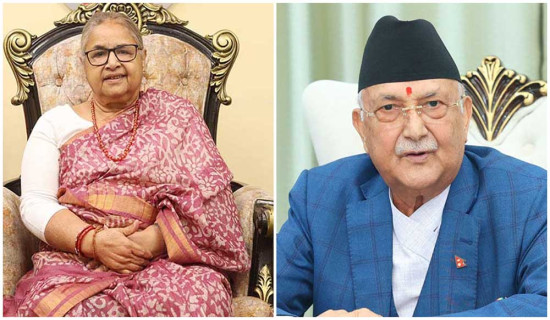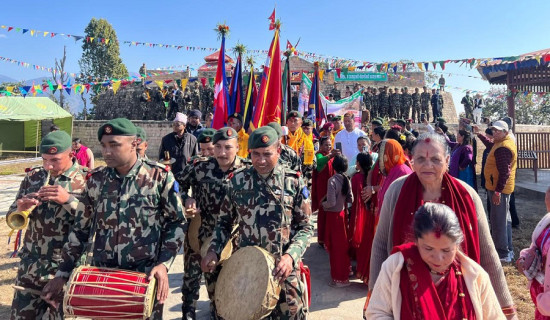- Friday, 9 January 2026
Ensure Effective Disaster Management
Recent floods and landslides wreaked havoc in many parts of country, mostly the Kathmandu Valley and surrounding areas. This is not the first time that Nepal has experienced floods and landslides. The staggering number of human casualties and the destruction of scores of highways, bridges and houses imply that disaster preparedness was not effective. With the proper disaster mitigation strategies in place, we can lessen damage significantly.
According to the National Disaster Risk Reduction and Management Authority, around 240 people were killed and properties worth billions of rupees destroyed. A total of 20 districts have been affected and 23 highways damaged or blocked. The floods and landslides washed away vital infrastructures such as bridges, roads, hydropower plants, transmission lines and crops, dealing a blow to national economy that is struggling to come out of recession. This will evidently delay the campaign to build back better.
Climate risks
The weather forecast had suggested possibility of high climate risks beforehand on September 26. The Department of Hydrology and Meteorology issued notices and warning in the places to be affected by the downpours. But it was not enforced and night buses plied at night, ignoring the warning. It raises a lot of questions: Why were the security forces not mobilised for the rescue of affected people in time? Were response teams kept on standby mode? The four members of a family at Nakkhu stayed on the rooftop of their hut for hours, waiting for help as the swelling flood was to sweep away them shortly. This discloses the disaster preparedness and response was not up to the mark.
The country has enacted Comprehensive Disaster Management Act 2074 and the Disaster Risk Reduction Management Regulations 2076. If the key tenets of Sendai framework were included in the Acts, Nepal could have responded better to the disaster. The Acts stipulate the deployment of security forces during disaster. But there was not sophisticated equipment that can contribute to immediate rescue operations. Still, our country’s security forces are doing their best with available equipment and resources.
We need better equipment and trained manpower to tackle the unintended disaster that his us anytime. Some weeks back. when a bus plunged into Trishuli River, we had to bring magnets from India to search for the passengers of the ill-fated buses. But the divers failed to recover them. The Muglin section of highway often witnesses accidents and disruptions. The concerned authorities seem to focus on just removing the roadblocks, which is just a short-term measure.
Disaster management requires shared responsibility. It is not just government’s duty alone. The community is doing their best by leveraging every means and ways to support the people in need. Nepal is a topographically challenged country prone to disasters like floods and landslides, which kill hundreds of people every year. This calls for comprehensive preparedness strategy that include mapping of vulnerable places, arrangement of rescue personnel, timely and effective communication of early warning and prudence utilisation of resources. We have very limited resources at our disposal but the government should pay heed to investing in disaster preparedness and response programmes.
After federalism was introduced in Nepal, there were drastic changes in governance system, which contributed to improved communication and ways of working. What changes were made to adapt to the changes in communication and reporting duties between government and disaster management agencies? There seems to be a huge gap and a lack of proper coordination between them. There are state agencies designed to effectively handle the pre- and post- disaster situation. They need to be equipped with adequate resources and staff so that the disaster will not inflict much damage to the people and their properties.
Immediate response
The immediate response from the community is appreciative. The government agencies are stepping up their measures with available means and resources. They need to be better coordinated at the time of rescue operations. Lack of coordination and cooperation leads to unimaginable loss of human casualties. Hiring efficient and experienced personnel to conduct proper research, mapping risk and vulnerability and framing preparedness strategies and involving community help reduce the damage caused by disaster. There is the need for transparent and clear communication among relevant departments.
There has been propensity of not learning from the past disasters. The related bodies and citizens cannot afford to be complacent about the floods and landslides that take the lives of people and destroy vital infrastructures beyond imagination. Collective action from all sides can be instrumental to minimise disaster and efficiently handle the post-disaster condition. This will create environment conducive to enforcing Building Back Better strategy that seeks to reduce the risk to the community when they are hit by disaster and other crisis.
(Bhattarai is currently pursuing Bachelor's degree in Social Work in Kathmandu.)
















